$3.8M in Action Fund Grants Help Protect 40 African American Historic Sites
Grants from the African American Cultural Heritage Action Fund advance ongoing preservation activities for historic places such as homes, museums, and landscapes that represent African American cultural heritage. To date, the program has supported 242 historic African American places and invested more than $20 million to help preserve significant sites imbued with Black life, humanity, and cultural heritage.
With amounts ranging from $50,000 to $155,000, these Action Fund grants support preservation work in four primary areas: Capital Projects, Organizational Capacity Building, Project Planning, and Programming and Interpretation. This year’s grant announcement also includes three grant programs:
National Grant Program
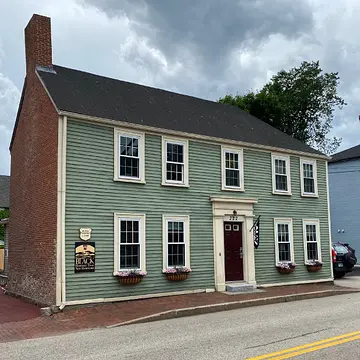
Black Heritage Trail of New Hampshire
Black Heritage Trail of New Hampshire, Inc. | Portsmouth, New Hampshire
Augmented reality will guide visitors to markers along the Black Heritage Trail of New Hampshire to view 3D representations of the people and places featured, bringing the area’s history to life. This engaging experience will be a dynamic way to learn more about the stories of African American life in New Hampshire.
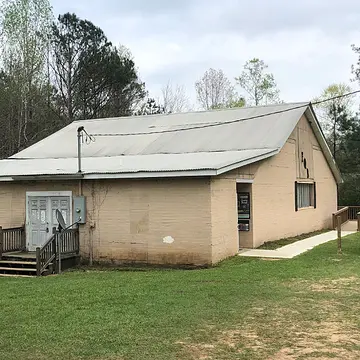
Freedom Quilting Bee Manufacturing Building
Freedom Quilting Bee Legacy | Alberta, Alabama
The Freedom Quilting Bee Cooperative was established in Alberta, Alabama, by Civil Rights activists Francis X. Walter and Estelle Witherspoon in 1966. This space now serves as a museum showcasing this community’s artistic legacy and providing educational programming. A project planning grant will provide the information needed to rehabilitate the original building and help plan for the utilization of the currently unusable spaces.
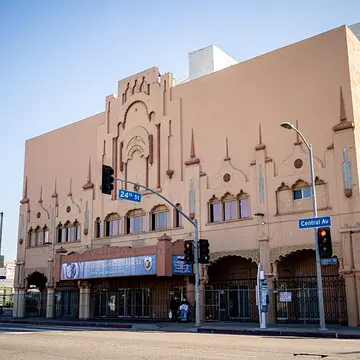
Lincoln Theatre
Coalition for Responsible Community Development | Los Angeles, California
Referred to as the "Apollo of the West," the Lincoln Theatre opened in Los Angeles in 1927 on Central Avenue, a social, cultural, and political hub for African American art, literature, and music. In December 2020, the Coalition for Responsible Community Development acquired the theater with the intention of restoring it as a space for live performances, community events and training space for Black and Brown residents interested in media- and arts-related industries. Funding will assist the organization in initiating planning work to return this historically significant West Coast Black performance space to prominence.
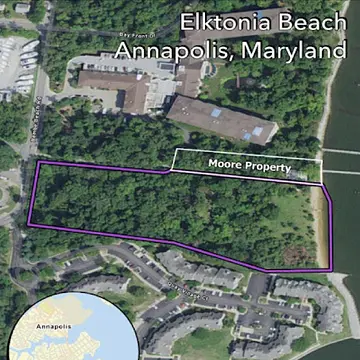
Elktonia Beach Heritage Park
Blacks of the Chesapeake Foundation | Annapolis, Maryland
Swimming pools, beaches, and other recreational facilities were a major national battleground during the struggle for Black civil rights, as segregation prohibited Black Americans from equal access to leisure activities. Purchased in 1902 by formerly enslaved veteran Fred Carr, Elktonia-Carrs Beach became a Green Book-listed recreational area where Black beachgoers had the opportunity to safely enjoy leisure activities. In partnership with the City of Annapolis, Blacks of the Chesapeake Foundation will utilize this grant to develop a comprehensive plan to ensure that the interpretation of the area’s Black history forms an integral part of the plans for the new Elktonia Heritage Park.
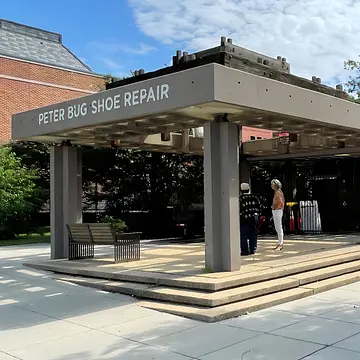
Peter Bug Shoe Academy
DC Historic Preservation Office | Washington, D.C.
Started in 1977 and housed in a historic plaza, the Peter Bug Shoe Academy has taught the craft of shoe repair, business, accounting, and other life skills to the area’s youth for over 46 years. The plaza was built in 1968 and designed by noted landscape architect M. Paul Friedberg and Simon Breines, an architect and pedestrian rights advocate. Funding will support developing an Architectural/Engineering (AE) Study of the building.

Morgan School
The Cherry Community Organization | Charlotte, North Carolina
Built in 1925 and closed in 1968 due to integration, Morgan School was considered the heart of the Cherry community for over four decades and embodies the stories of segregated education in Charlotte. As the permanent stewards of the Morgan School, the Cherry Community Organization envisions a new life for the site as the Historic Morgan School Community Learning and Heritage Center. A business plan with a comprehensive fundraising strategy will provide these community stewards with the necessary roadmap to preserve Morgan School and ensure that its educational legacy has a sustainable future.
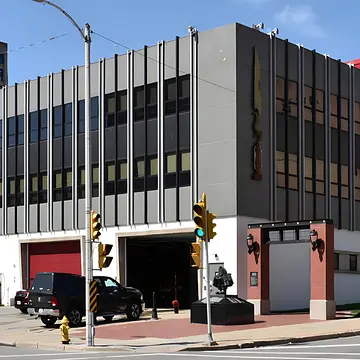
Sites of Alonzo Robinson
University of Wisconsin-Milwaukee | Milwaukee, Wisconsin
Alonzo Robinson, Jr. was Wisconsin’s first Black registered architect. With a career that spanned nearly four decades, Robinson lent his distinctive Modernist aesthetic to a number of civic and commercial buildings, houses, and community churches in Milwaukee and surrounding areas. The University plans to utilize the funding for a comprehensive survey and inventory of Robinson’s work that will include collaboration with Robinson's descendants and a partnership with the Wisconsin Black Historical Society.
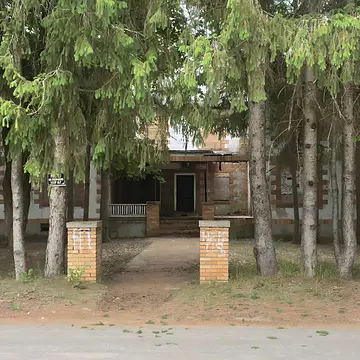
Idlewild’s Hotel Casa Blanca
1st Neighbor | Idlewild, Michigan
For several decades, the Black resort township of Idlewild served as the premiere recreational retreat from the urban city life for middle-class African Americans during the era of Jim Crow. The capital project grant will go towards stabilizing the Hotel Casa Blanca, thus securing the structural integrity of a historical artifact and architectural treasure and helping to anchor the economic redevelopment of Idlewild as a contemporary space for Black respite.
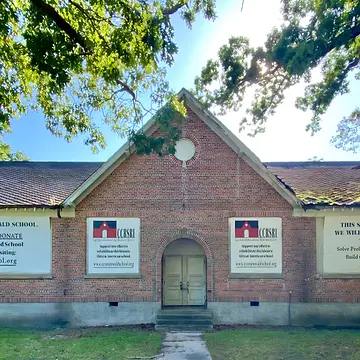
Cape Charles Rosenwald School
Cape Charles Rosenwald School Restoration Initiative| Cape Charles, Virginia
Constructed in 1929 to educate African American elementary school students in the Cape Charles community, the Cape Charles Rosenwald School is a rare example of a brick four-teacher Rosenwald School. Funding will be used to restore the building’s windows, a crucial step towards the adaptive reuse of the property as an educational center and community gathering space.

Neosho Colored School
Carver Birthplace Association | Diamond, Missouri
Built in 1872, the Neosho Colored School was the first school attended by Black agricultural scientist and inventor George Washington Carver. Now located close to the George Washington Carver National Monument, the school will utilize this grant to complete the interior rehabilitation and address exterior building needs guided by a Historic Structure Report. Improvements to the site will allow it to continue interpreting Carver’s life and legacy and telling the story of the struggle for access to education for Black children in Reconstruction-era Missouri.

Casa Cortijo at El Ancón de Loíza
Colectivo El Ancón de Loíza | Loíza, Puerto Rico
Formerly the home of the Cortijo family, Casa Cortijo serves as a community organization and gathering place dedicated to the recognition and celebration of the history of Loíza and Afro-Caribbean culture. The Cortijo family operated a rope-pulled barge that provided crossing from shore to shore of the Río Grande de Loíza, connecting the northeast of the country to the metropolitan area of the island for generations during which the community was denied a bridge. Capital repairs to select interior and exterior building features will assist in preserving this important, descendant-involved community landmark for generations to come.
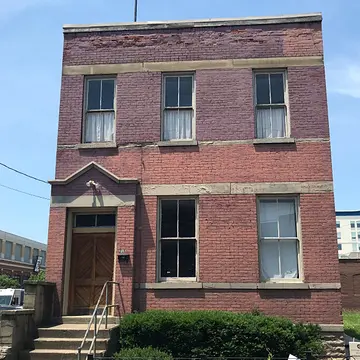
Southgate Street School
Historic Preservation Office of Newport | Newport, Kentucky
Built in 1893 for African American students, the Southgate Street schoolhouse is currently a museum and education center exploring the Newport community’s history. Funding will provide for updating the building’s HVAC system, restoring its windows and doors, and repairing interior water damage.

Henry Ossawa Tanner House
The Friends of the Tanner House and Preservation Alliance for Greater Philadelphia | Philadelphia, Pennsylvania
Located in North Philadelphia’s Strawberry Mansion neighborhood, the home of renowned 19th-century Black American painter Henry Ossawa Tanner and his accomplished family is near collapse. Known for his highly recognizable painting The Banjo Lesson, funding will stabilize the home and repair its roof. These critical repairs will help ensure that the Tanner family’s story of achievement can be told to future generations.
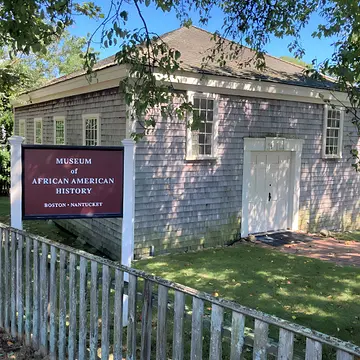
Nantucket's African Meeting House
Museum of African American History | Nantucket, Massachusetts
The only public building constructed and occupied by African Americans in the 19th century still standing on Nantucket, the African American Meeting House is a prominent reminder that African and African American people once thrived on the island as part of the New Guinea community. The harsh coastal climate has deteriorated the windows and required the caretakers to focus on restoring and repairing antique glass and other necessary materials to sustain the integrity of this cultural landmark's historic form.
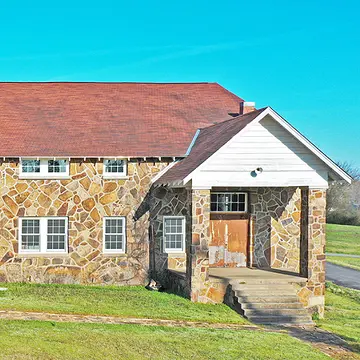
Menifee Gymnasium
Town of Menifee | Menifee, Arkansas
By 1938, a community built by formerly enslaved and freed black families in Menifee had established a school district recognized as "one of the best operating rural schools in Arkansas," resulting in its selection by the Works Progress Administration as a site for a new gymnasium. Today, the Menifee Gymnasium is one of the only remaining structures to survive a devastating tornado in 1960. The town continues its community-led efforts to preserve the facility with interior remediations and repairs, extending the life of this cultural anchor and social center for Black residents.

YMI Cultural Center
YMI Cultural Center, Inc. | Asheville, North Carolina
The nation’s first free-standing Black cultural center, the Young Men’s Institute has been a cultural hub for Asheville’s African American community since it opened in 1893. Constructed by 100 Black builders and craftspeople, the center has long been a hub for cultural, economic, and leadership development activities. Funding will provide for the restoration of its original wood flooring and historical elements as well as repainting the building’s interior.
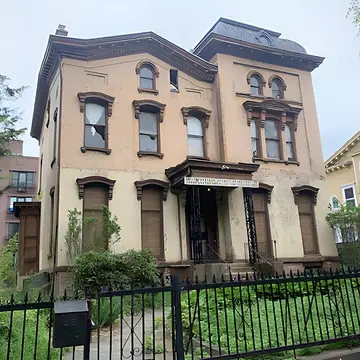
United Order of Tents Eastern District #3
United Order of Tents Eastern District #3 | Brooklyn, New York
Two formerly enslaved women, Annetta Minkins Lane of Norfolk, Virginia and Harriet R. Taylor of Hampton, Virginia, founded the United Order of Tents in 1867. Based in the community of Bedford-Stuyvesant, the United Order of Tents is the oldest Black women's fraternal organization in the U.S. The Eastern District #3 chapter focuses its mission on serving the local community with emphasis on outreach to elderly residents. Funding will support the restoration and preservation of the chapter’s historic headquarters at 87 MacDonough Street.
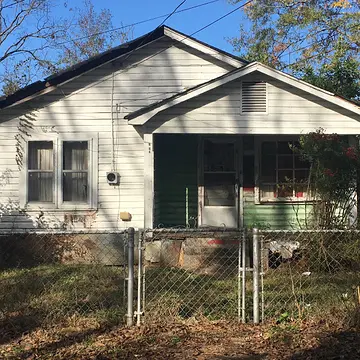
L.V. Hull Home & Studio
Keysmith Foundation | Kosciusko, Mississippi
Self-proclaimed “Unusual Artist” L.V. Hull transformed her home into an artistic environment that attracted pilgrims from around the world. The stabilization and rehabilitation of her home and studio will serve as the first step towards making the structure form part of the upcoming L.V. Hull Legacy Center.
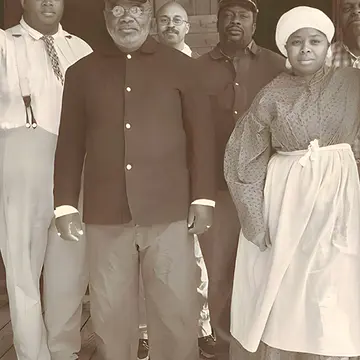
The Slave Dwelling Project
The Slave Dwelling Project | Ladson, South Carolina
The Slave Dwelling Project documents and preserves dwellings of the enslaved and engages communities through educational public sleepovers, conferences, and living history programs. Funding will support an expansion of the Inalienable Rights program, which includes food education/cooking demonstrations, brick making in the style of enslaved craftsmen, and blacksmith demonstrations from expert blacksmiths.

Dew Drop Inn
Level Ground | New Orleans, Louisiana
Known as the “South’s swankiest night spot” in the mid-1900s, the Dew Drop Inn is a symbol of the enterprising spirit of Black business. Level Ground will create a comprehensive and immersive exhibition to fill the newly restored site, which includes a boutique hotel and music venue. The completion of this project will fuel economic development in Central City, a beloved neighborhood sitting in the heart of New Orleans.

St. Johns County African American Heritage Trail
St. Johns County Cultural Council, Inc. | St. Augustine, Florida
Home to a city known for its fusion of African American, Indigenous, and Spanish colonial history and representing the southern-most point of the Gullah Geechee National Heritage Corridor, St. Johns County is comprised of some of the most historically significant imprints in the state of Florida. The St. Johns County Cultural Council will use the grant to create and promote a heritage trail that will raise awareness about the history of the area and increase visitor engagement.
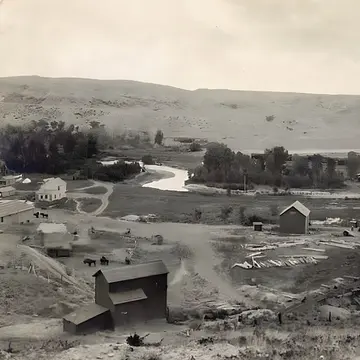
Sheridan County Iron Riders Historic Trail
Sheridan Community Land Trust | Sheridan, Wyoming
In 1897, African American soldiers of the 25th Infantry Regiment Bicycle Corps rode 1,900 miles through Wyoming and Montana to St. Louis. Funding will go towards the creation of a historic trail and programming that will document and celebrate their epic journey through the American West.

(Un)Known Project Augmented Reality App
IDEAS xLab | Louisville, Kentucky
As a further activation of the “On the Banks of Freedom” public art installation, the (Un)Known Project Augmented Reality App will highlight historic sites of enslavement around Louisville. Funding for the app will allow users to engage with 3D characters and to stand in the footsteps of the enslaved by bringing stories of enslavement to life through voiceovers, music, and poetry.
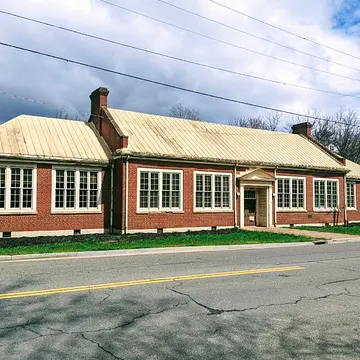
Calfee Training School
Calfee Community & Cultural Center, Inc. | Pulaski, Virginia
Alumni joined with partners to preserve this 1939 school for African American students that was integral to the story of education equality. An immersive multimedia exhibit will be developed to tell the story of the 1947 lawsuit, which helped to pave the way for the NAACP’s legal strategy in Brown v. Board of Education.
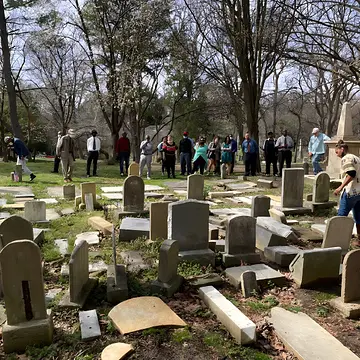
Mount Zion Cemetery and Female Union Band Society Cemetery
Black Georgetown Foundation | Washington, D.C.
Listed on the National Register of Historic Places, these two cemeteries are the final resting place for 8,000-10,000 African Americans who lived and worked in the Georgetown area from the 1700s to the 1950s. Along with being the oldest Black cemeteries in Washington, D.C., the site includes an antebellum-era vault that served as refuge for freedom seekers on the Underground Railroad. Funding will support the salary of a full-time Executive Director who will help to preserve and restore this important piece of history.
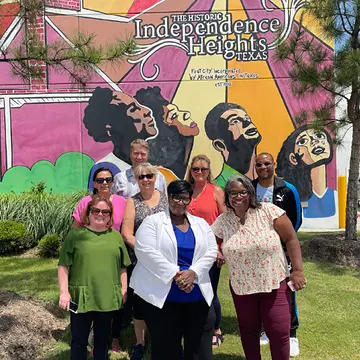
Independence Heights
Independence Heights Conservancy | Houston, Texas
Conserving Black Modernism
Conserving Black Modernism is a program to preserve Modern architecture by Black architects and designers. In its first grant round, eight historic structures are receiving $1.2 million to help advance long-term preservation planning. This funding is part of the Conserving Black Modernism partnership led by the Action Fund with support from the Getty Foundation.

Charles McAfee Swimming Pool and Pool House
City of Wichita | Wichita, Kansas
Constructed in 1969, the Charles McAfee Pool House, with its distinctive modular shade structures, was designed by Black architect Charles McAfee, one of the founding members of the National Organization of Minority Architects (NOMA). Funding will go towards developing a preservation plan to guide the site’s future maintenance and long-term care.
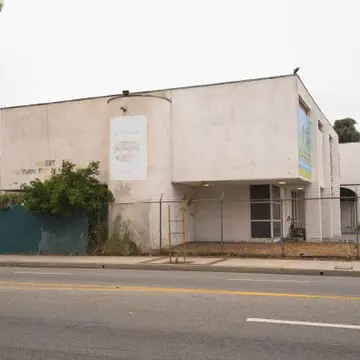
Watts Happening Cultural Center
City of Los Angeles | Los Angeles, California
A design collaboration between African American architects Robert Kennard and Arthur Silvers, the Watts Happening Cultural Center is a centerpiece for Black arts and culture in the Watts neighborhood of South Los Angeles. Funding will enable the development of a Historic Structure Report and preservation plan to guide future rehabilitation and programming for this cultural anchor, home of the historic Mafundi Institute and other community organizations.
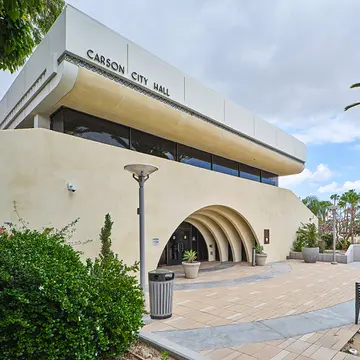
Carson City Hall Building
City of Carson | Carson, California
The Spanish Rancho- and Japanese-influenced Carson City Hall, with its organic, nautical-inspired forms, was designed by Black architect Robert Kennard, whose firm is the oldest Black American architectural firm in Los Angeles. A Historic Structure Report will provide information to address the preservation needs of the building and landscape as well as enhance public educational programming to raise awareness about the site’s importance.

First Baptist Church-West
First Baptist Church-West Community Services Association | Charlotte, North Carolina
Recognized as the oldest Black Baptist church in Charlotte, North Carolina, First Baptist Church-West was designed by Harvey Gantt, the first Black Mayor of Charlotte and the first African American student admitted to Clemson University. A comprehensive plan will allow the history of the sanctuary to be preserved with necessary repairs to the roof and baptismal area.

Fourth Baptist Church’s Educational Wing
Fourth Baptist Church | Richmond, Virginia
Established in 1859, Fourth Baptist Church is one of the oldest Black congregations in Virginia. The church’s modernist educational wing was designed by Ethel Bailey Furman, the earliest known Black woman architect in Virginia. Furman was self-taught and designed an estimated two hundred residences and churches in Virginia as well as two churches in Liberia. A Historic Structure Report with limited capital repairs will give the congregation the information they need to preserve the educational wing and allow future generations to learn about the trailblazing legacy of Ethel Bailey Furman.

Morgan State University’s Jenkins Hall
Morgan State University | Baltimore, Maryland
Named after a former president of the University, Jenkins Hall was designed by Louis Edwin Fry, the first African American to receive a master’s degree in architecture from Harvard. Morgan State University will complete a conservation management plan and reuse study to determine the optimal future use for the building while preserving its monumental history.
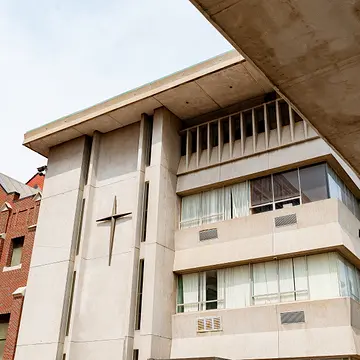
Second Baptist Church of Detroit’s Education Building
Second Baptist Church of Detroit | Detroit, Michigan
Second Baptist Church of Detroit is home to the oldest Black congregation in Michigan. Established in 1836, the church played a significant role in the social and political lives of generations of Black Detroit residents. Renowned Black architect Nathan Johnson designed the Modernist education building in 1968, which allowed the congregation to further its educational impact. A comprehensive building assessment with limited capital repairs will equip the congregation with the necessary framework to preserve the educational building for generations to come.
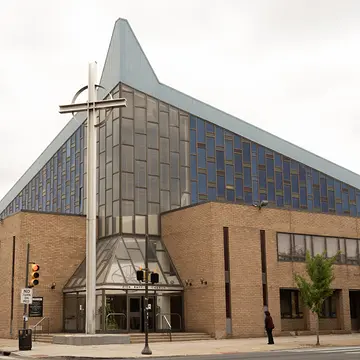
Zion Baptist Church
Zion Baptist Church | Philadelphia, Pennsylvania
Renowned Black architect Walter Livingston, Jr. designed Zion Baptist Church in the early 1970s. Characterized by its dramatic clerestory walls composed of colorful staggered glass panels that rise above the brick first story, the church embodies a deep civil rights history, having been led by civil rights leader Reverend Leon Sullivan. A comprehensive building assessment and preservation plan will provide a roadmap for the protection and maintenance of this significant historic church and community treasure.
HBCU Cultural Heritage Stewardship Initiative
The preservation of Historically Black Colleges & Universities (HBCUs) across the country is a key focus of this year’s grant announcement. Through the Action Fund’s HBCU Cultural Heritage Stewardship Initiative, six HBCUs are receiving nearly $700,000 funding to ensure the protection of their cultural assets.

Morris College
Morris College | Sumter, South Carolina
Founded in 1908 by the Baptist Educational Missionary and Sunday School Convention of South Carolina, Morris College is integral to the Sumter, South Carolina downtown and surrounding community. Envisioned by its founders as a place to provide the formal educational opportunities they were denied, Morris College spans 12 acres and includes historic buildings dating from 1924. A comprehensive planning project will include the development of a campus-wide stewardship plan to evaluate and preserve the College’s buildings and strengthen the historical foundation on which it was established.
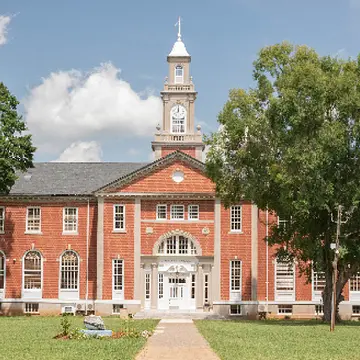
Talladega College
Talladega College | Talladega, Alabama
Comprised of a 55-acre historic district, Talladega College, the first private, historically Black liberal arts college in Alabama, exhibits a wide range of architectural styles. Founded by two formally enslaved men, its historic buildings date from 1869 including the college’s Savery Library, the original home of the nationally recognized Amistad murals painted by noted artist Hale Woodruff. A comprehensive project plan, which will include the college’s first campus-wide preservation plan and its first master plan, will lay the foundation for the preservation of Talladega College’s rich history.
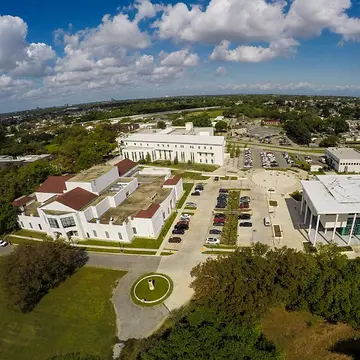
Dillard University
Dillard University | New Orleans, Louisiana
Founded in 1930, Dillard University is in the Gentilly neighborhood of New Orleans. Its National Register listed 70-acre campus is known for its mature live oaks and white Classically designed brick buildings dating from 1935. A comprehensive planning project will include the development of a campus-wide preservation plan that will enable the university to preserve its history and character as it grows to include new classrooms and housing. The plan will also address the impact of time, severe weather, and climate change on the historic campus.
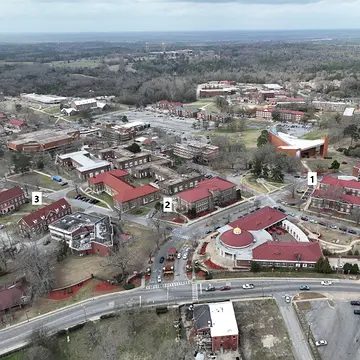
Tuskegee University
Tuskegee University’s Department of Architecture | Tuskegee, Alabama
Tuskegee (Institute) University was founded in 1881 under the leadership of Dr. Booker T. Washington. It’s now over 5,000-acre campus comprises over 100 buildings and is designated as a National Historic Site. Led by its Department of Architecture, the university will develop a sustainability and climate change resiliency plan to create preservation strategies that address the effects of climate change on its historic resources.
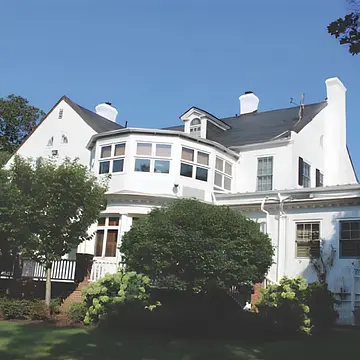
Hampton University’s Historic Landscape
Hampton University| Hampton, Virginia
Influenced by the educational philosophy of founder General Samuel Chapman Armstrong to “stimulate student’s respect for education,” Hampton University was founded in 1868 with the mission to educate the formally enslaved, their descendants, American Indians, and women. Hampton University will utilize a historic landscape plan to inform landscape preservation and better facilitate storytelling and interpretation for students and campus visitors.

Jarvis Christian University’s Florence Robinson Cottage
Jarvis Christian University | Hawkins, Texas
Jarvis Christian University was founded in 1908 by the Negro Disciples of Christ as a school for Black youth starting in elementary school. Now located on 456 acres near Hawkins, Texas, the university serves over 800 students. Named in honor of a former instructor, the Florence Robinson Cottage was built in 1941 and previously served as a residence for the college president. A comprehensive planning process will develop a rehabilitation and stewardship plan to guide the university in making the Florence Robinson Cottage a viable historic site.



